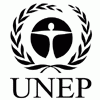Community / Land projects / Promoting Sustainable Agricultural Production and Conservation of Key Biodiversity Species through Land Resto
Promoting Sustainable Agricultural Production and Conservation of Key Biodiversity Species through Land Resto

€10135491.77
06/22 - 06/22
Completed
This project is part of
Implementing Organisations
Donors
Data Providers
Objectives
To strengthen national, regional and municipal capacity and actions to implement an integrated ecosystem management approach in the Dallol Bosso landscape in Niger
Other
Note: Disbursement data provided is cumulative and covers disbursement made by the project Agency.
Target Groups
1. Around 100,000 households directly depend on the landscape resources and ecosystems of the Dallol Bosso for their livelihoods, jobs and incomes. The project target 150 000 people (of whom 50% will constitute women) as direct beneficiaries of project interventions. The project will directly affect the socio-economic lives of these 150 000 agricultural producers, pastoral communities, fishermen, micro-entrepreneurs in the transformation and marketing of agropastoral products, consumers of agricultural products, as well as those who use/harvest woody products (firewood). Planned interventions in eco-tourism will deliberately seek to consider the involvement of marginalized community members - women, young people, elderly and handicapped, as beneficiaries. With improved eco-tourism accompanied by required infrastructure and business undertakings such as providing accommodation to eco-tourists, establishment of restaurants and trainng programs in art and craft, the potential for job creation is unquestionably huge, indirectly impacting as many as about 5 000 households around the Giraffe Zone. In addition, these mentioned entrepreneurial activities are potential alternative income generating activities that will lead to reduced pressure on land through cutting down of the tiger bush for sale and land clearing for agricultural activities. The brunt of increased degradation which results in food insecurity, reduction of agricultural productivity and water, as well as the loss of biodiversity is borne by these marginalized members of the Giraffe Zone. 2. In addition to establishing and or improving value chains for rice, beef and NTFPs as well as enhancing capacities to reduce post-harvest losses, eco-labeling and improved access to market for these products will be an enormous opportunity for job creation among community members in the Giraffe Zone and surrounding areas. community reliance, exploitation and further degradation of natural resources due to created jobs, the engagement in agricultural production systems underpinned by agroforestry systems will increase yields, limit expansion of farming frontiers and increase the carbon sequestration capacity of the Giraffe Zone and avoidance of additional carbon emissions. The promotion of ecotourism in the Giraffe Zone will improve the local economy, but also inform the allocation of often meagre financial resources at national level to other development sectors and regions of the country. In this way, what happens in the Giraffee Zone will benefit national level economy. The increased influx of ecotourists is an additional and obvious benefit to the national level economy. Likewise, improved agricultural production will have positive socio-economic spill-overs to areas beyond the project catchment area for the benefit of the whole country. 3. Reduced post-harvest losses and improved eco-labeling will increase the producers’ ability to fetch better prices. There is also huge rice markets from business entities from Benin and Nigeria buying at farm gate prices. However, with improved packaging and strengthened marketing platforms, producers are more likely not only to break even, but make more decent profits to lift themselves up from abject poverty, reduce rural-urban migration and incetivise the youth into agriculture which they see more and more less lucrative. 4. The success of ecotourism in the Giraffe Zone of Niger partly depends on transformational change in agricultural production systems, pastoral communities but also on the establishment of enforceable land use planning regulations and legal and institutional infrastructure. All these points of transformational change require the involvement of local communities, partnerships with other stakeholders including NGOs, private operators and the government of Niger itself. In light of the fore-going, the following are additional direct and indirect socio-economic benefits of the proposed project with spillover effects at national level: Construction of infrastructure to enhance post-harvest handling: This will generally improve the physical infrastructure in the area, and create jobs in the construction as well as in the post-harvest handling, eco-labeling and improved access to markets. Job-creation is critical in Niger particularly given the wave of extremism and radicalisation among the youth linked to lack of employment; Promotion of ecotourism small businesses such as art and crafts to provide additional but also diversified income for local people. At least 1 500 will be trained in art and craft and other tourism-boosting activities such as food services and accommodation – leading to provision of jobs that lessen the pressure exerted on resources. The involvement of the private sector will be an opportunity for jobs for local community members in the ecotourism operations; Besides diversifying and improving alternative income generating activities, training communities to respond to the demands of both local and international tourists is an opportunity for communities to have their capacities built and knowledge transferred. Therefore, this project will benefit communities through capacity development and knowledge transfer; The boost in eco-tourism will also improve the level of financial benefits that are attributed to communities as primary stakeholders in the management of giraffes in the giraffe zone and hippos in the surrounding areas. Currently, communities receive 50% of revenues from eco-tourism, while the state receives 20% and 30% is allocated to operations. However, the revenues are symbolic due to poorly developed tourism opportunities; Therefore, boosting eco-tourism, even with the current benefit sharing quotas, communities and the nation at large are more likely to benefit, in addition to jobs and conservation of giraffes, hippos and tiger bushes. A study by Leroy et al. (2009)[1] in the Dallol Bosso region shows that currently, most tourists come mainly from Niamey, and that improved accrual of eco-tourism benefits to communities that are more equitably distributed can spur local people’s positive perception of giraffes and their active participation in the conservation efforts; Preserved biodiversity at the farm level through production systems involving agroforestry systems, intercropping, and preservation of locally adapted seed landraces. Through this project about 1 500 households will adopt the use of biodiversity-friendly agricultural production systems, limiting the expansion of cropland by about 269,975 ha in Giraffe Zone. In addition, the proposed agricultural production systems have potential to improve nutrient cycling in the soil, increased primary production, and carbon sequestration in cropland areas; Improved production systems will lead to alleviate threats of food insecurity, but also human-animal conflicts that are usually due to loss of habitat for wildlife as humans expand frontiers of cropland and grazing land for the domesticated animals; Conservation of cultural and natural landscapes and protection of cultural heritage. This benefit of this project points to the cultural value that this project will make not only to Dallol Bosso and surrounding areas, but also to the national level as a whole. Therefore, the project will make both economic and cultural contribution to the Republic of Niger; and The project will employ a participatory approach that will create opportunities for joint community biodiversity, land and water management activities, including sensitisation programs that will facilitate knowledge transfer. This will empower communities in the Giraffe Zone and surrounding areas with knowledge for improved management of resources and improved livelihoods. [1] Romain Leroy, Marie-Noe¨l de Visscher, Oudou Halidou & Amadou Boureima (2009). The last African white giraffes live in farmers’ fields. Biodivers Conserv. 18:2663–2677




